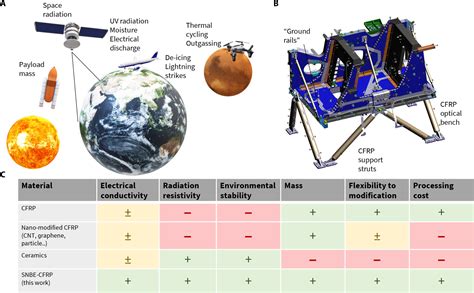Imagine a world where our spacecraft are powered by solar energy from organic solar cells, lighter and more flexible than traditional silicon or gallium arsenide. It’s not just a dream anymore – it’s the cutting-edge research being conducted by experts like Yongxi Li and Stephen Forrest.
“Silicon semiconductors aren’t stable in space because of proton irradiation coming from the sun,”
explained Yongxi Li, shedding light on the challenges faced by traditional solar cell materials in space. The recent study published in Joule delved deeper into the impact of radiation at a molecular level on organic photovoltaics.
While gallium arsenide has been a go-to material for its efficiency and proton resistance, it comes with drawbacks such as cost and weight. Organic solar cells, on the other hand, offer a promising solution with their flexibility and lightweight design. This study has opened up new possibilities for using organics in space missions where reliability is crucial.
In their experiments, researchers observed that organic solar cells made with small molecules showed remarkable resilience to proton exposure over an extended period. However, those made with polymers exhibited a significant decrease in efficiency due to the formation of electron traps caused by proton damage.
“We found that protons cleave some of the side chains, and that leaves an electron trap that degrades solar cell performance,”
explained Stephen Forrest, providing insights into how these traps impede electron flow within the cell. He also mentioned potential solutions such as thermal annealing or filling the traps with other atoms to restore performance.
The prospect of self-healing solar cells under sunlight is tantalizing – envisioning them repairing themselves at temperatures achievable in space environments raises hopes for sustainable power generation during long missions. However, challenges remain regarding the reliability and effectiveness of this healing process beyond Earth’s atmosphere.
As Li embarks on further research at Nanjing University, exploring advanced materials for manufacturing applications, questions persist about improving organic solar cell designs to prevent electron trap formation altogether. These avenues hold promise for enhancing the longevity and efficiency of future spacecraft power systems.
Funded by Universal Display Corp and the U.S. Office of Naval Research, this groundbreaking research was conducted at top-tier facilities like Lurie Nanofabrication Facility and Michigan Ion Beam Laboratory before analysis at Michigan Center for Materials Characterization. The collaboration between academia and industry underscores the importance of innovation partnerships in advancing technology.
With patent protection sought for their discoveries through U-M Innovation Partnerships assistance, it’s evident that these findings have significant commercial potential as well. Forrest’s affiliation with Universal Display Corp further highlights the practical implications of this research beyond academic realms.
In conclusion, organic solar cells represent a paradigm shift in space exploration technology – offering not just efficient power generation but also resilience to harsh radiation environments encountered beyond Earth’s protective shield. The journey towards integrating these innovations into mainstream aerospace applications is just beginning!

